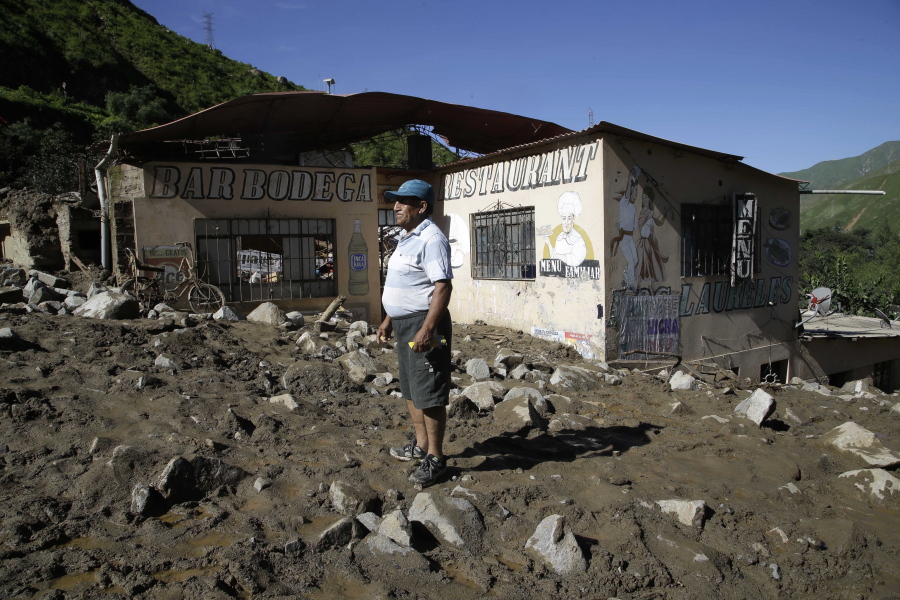BARBABLANCA, Peru — Gathered along the edge of a mountain, the men, women and children of Barbablanca watched in stunned silence as a river of mud washed over their small village.
The mud slid into windows, covering carefully made beds and school desks. It buried fields filled with avocado trees and the village’s prized ripe green cherimoya fruit. It left Barbablanca’s hydroelectric plant an enclosure of metal rods planted in a blanket of sludge.
“We’ve lost everything,” said Ricardo Lazaro, 73, whose life’s savings were put into building a small hotel destroyed in the worst environmental calamity to strike Peru in nearly two decades. “I don’t know who will help me.”
The rains pummeling Peru, brought about by a warming of Pacific Ocean waters that climatologists are calling a “coastal El Nino,” have left 85 dead, crippled the nation’s infrastructure, ruined thousands of fields of crops and destroyed 800 villages, most much like Barbablanca.



